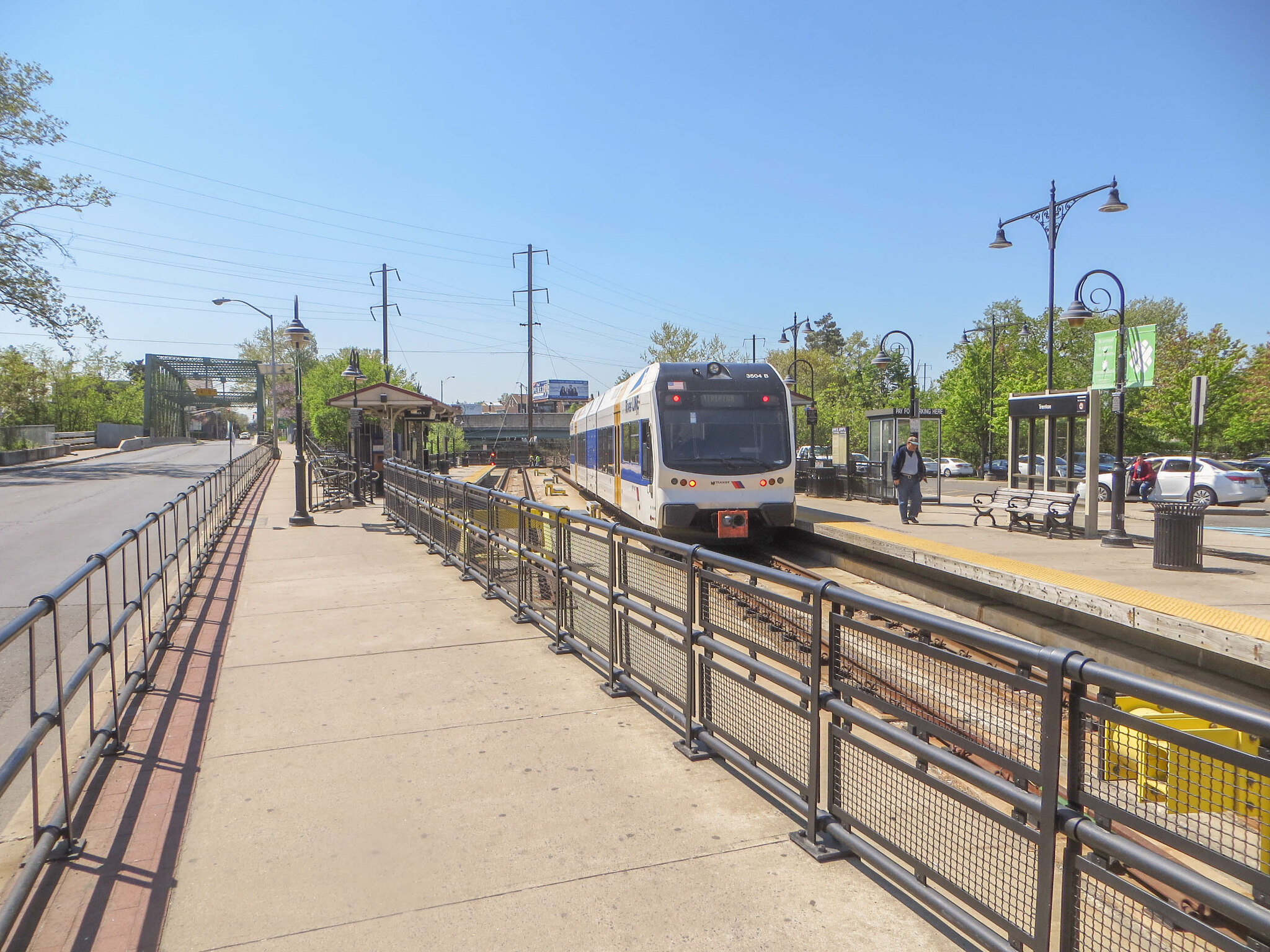People may not love New Jersey Transit, but Gov. Phil Murphy is betting that they'll want to live next to it.
The Murphy administration is looking to improve the lives of New Jersey residents as well as bolster the state's economy by urbanizing its suburbs with new housing and businesses concentrated around the state's expansive rail network,Murphy announced this week at Rowan University.
"We are hard at work attracting businesses to our state, beyond a narrow focus on excessive corporate tax incentives," Murphy said at a forum with the New Jersey Chamber of Commerce. "We must continue to find ways to realize New Jersey’s potential as a hub for business activity, as well as a fantastic place to raise a family.”
The notion of transit-oriented development as an economic development policy is a departure from decades of sprawl that has been allowed to occur unabated under both Republican and Democratic administrations in the so-called Garden State. Roughly 11.6 percent of the state's workforce, about 500,000 people, take public transit to their jobs — and more than 15 percent of state residents spent more than an hour getting to and from work in 2016.
Murphy hopes to upend some of those trends by partnering with transit agencies to develop transit villages that are attractive to Jersey residents and retailers alike.
"At a macro level, New Jersey has a strategic goal to increase affordable housing stock next to train stations where it makes sense," New Jersey Economic Development Authority CEO Tim Sullivan told Streetsblog, citing New York City's Bloomberg and de Blasio administrations' work with the MTA as a model. "We have historically not focused development there, but there’s been more sprawl and suburban pattern development you might like."
Murphy's proposal would seek to redevelop NJ Transit-owned parking lots and land close to rail stations for housing and retail businesses. The administration is already zeroing in on NJ Transit-owned sites in Newark, Trenton, Metro Park, Jersey City, and Paterson and the transit authority has separately identified sites in Bordentown, Bound Brook, Camden, and Hoboken.
Details about the size of the lots and how much housing could exist there have not been released and issues regarding zoning, housing density, and additional transit services near of property would be resolved on a case-by-case basis, officials from NJ Transit and the governor's office said.
"The governor’s plan advances NJ Transit’s continuing efforts to promote economic growth in the state while increasing non farebox revenue for the agency," NJ Transit spokesman Jim Smith said in a statement to Streetsblog.
The idea isn't entirely new in the Garden State. Several town governments are already working with NJ Transit to spur development of stores and apartments near commuter rail stations.
Last October, Aberdeen and the transit-friendly developer BNE teamed up to open The Link at Aberdeen Station, which includes swanky low-rise apartments, stores and restaurants, and walkable access to the Aberdeen-Matawan rail station. Matawan announced another mixed-use development on seven acres of NJ Transit-owned land along the North Jersey Coast Line six months later.
On June 25, the city of Bayonne and NJ Transit announced they're searching for a developer to build a building between four and 12 stories on 4.5 acres of NJ Transit-owned land along the Hudson-bergen Light Rail line. The residential and retail development would be built on a parking lot next to the Bayonne 34th Street Station.
And in July, Somerset Development bought 11 acres of land from NJ Transit and will work with the authority to create a Somerset Station transit village with 370 apartments, 156 town houses, 4,000 square feet of retail space, two parking garages, and a new road connecting Route 206 with the rail station in what is the largest mixed-use development in the county's history. The area will be completed by 2023.
The state hopes to get moving quickly on other sites, which could include the elimination of surface parking lots, bike-sharing facilities and space for other modes of transit based on the demands of local stakeholders.
"We’ll look at it parcel by parcel," Sullivan said. "Certainly swapping out surface parking for mixed-use development with replacement parking has to make sure it works out for taxpayers, developers, and riders, but if you can swap it out that’s a worthy goal."





